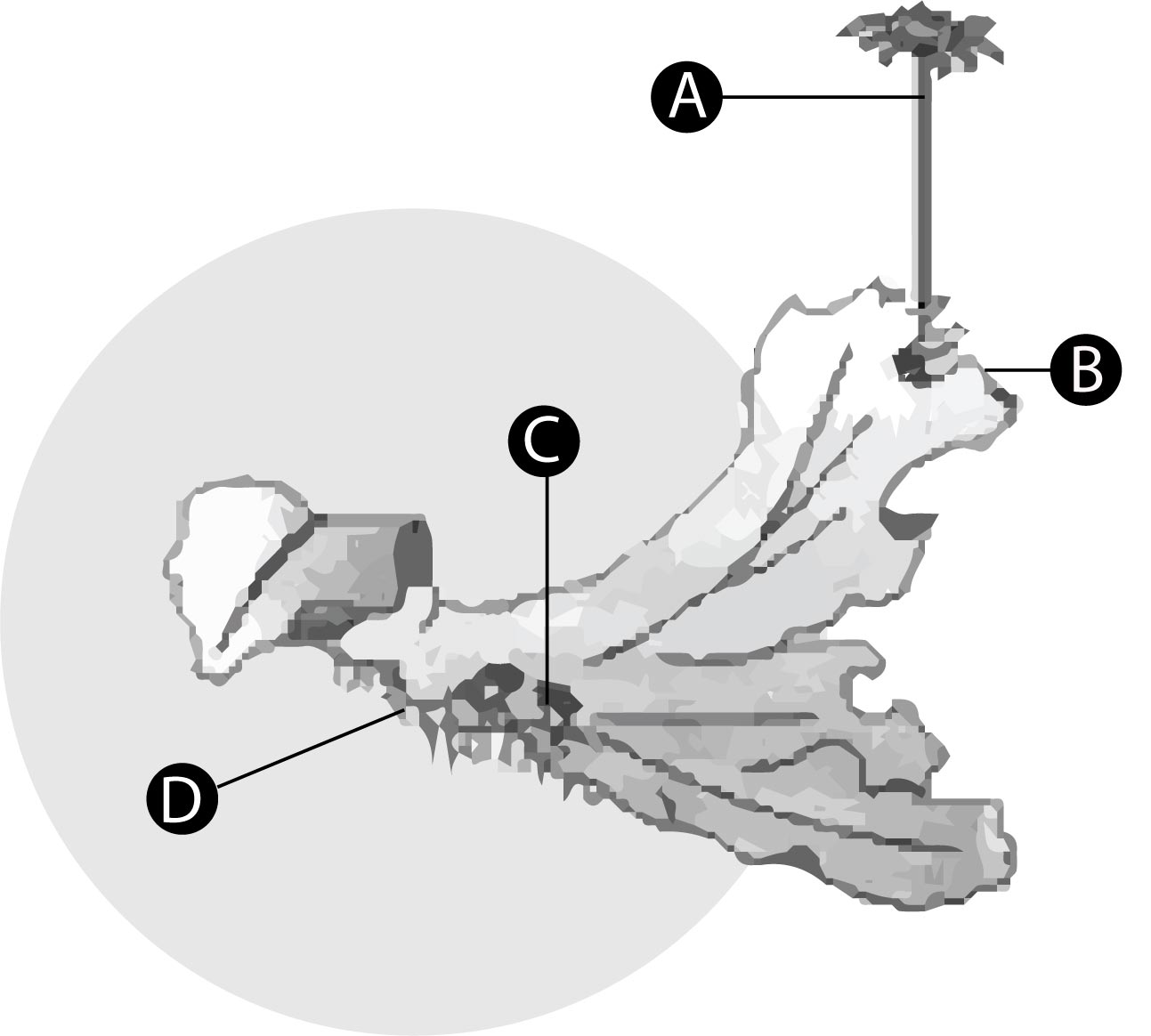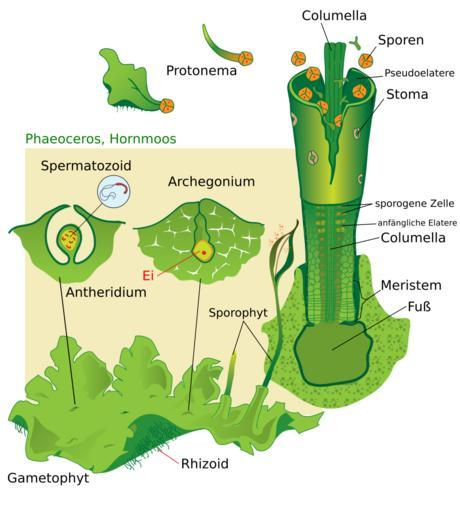
Examine the figure given below and select the right option giving all the four parts (A, B, C, and D) correctly identified are,

(A) (A) Archegoniophore, (B) Female thallus,(C) Gemma Cup, (D) Rhizoids
(B) (A) Archegoniophore, (B) Female thallus, (C) Bud, (D) Foot
(C) (A) Seta, (B) Sporophyte, (C) Protonema, (D) Rhizoids
(D) (A) Antheridiophore, (B) Male thallus, (C) Globule, (D) Roots

Answer
572.4k+ views
Hint: Archegonia are borne on the stalk or outer growth of the bryophytes and algae body. The protrusion that extends from the lower epidermal cells of bryophytes and algae performs the same function as of root hairs of vascular plants.
Complete answer:
This figure is of female Marchantia.
The label ‘A’ in the diagram is archegoniophore. ‘B’ is a female thallus. The Gemma cup is marked with ‘C’ and rhizoids with ‘D’.
Marchantia is a genus in the family of Marchantiaceae. Both male and female Marchantia have an umbrellalike stalked reproductive structure.
The hanging part below the epidermis is known as rhizoids. It is used for attaching and also helps in absorbing nutrients.

Archegoniophore is a stalklike structure on which female sex organs are borne.
The main body of plant or algae or fungi is known as a Thallus.
Thallus has a tiny cuplike structure known as a gemma cup. Gemma cup contains Gemmae which helps in vegetative reproduction.
Sexual reproduction in Marchantia is oogamous. Oogamous means a reproduction in which the male gamete is motile and females gametes are immotile. Water is essential for its reproduction.
The alternation of generation is seen in Marchantia. Alteration of generation is seen in that organism that has different sexual and asexual stages.
So, the correct answer is‘(A) Archegoniophore, (B) Female thallus, (C) Gemma cup, (D) Rhizoids’.
Note: Rhizoids are of two types: smoothwalled and tuberculate rhizoids.Though they both perform the same function of anchorage and absorbing nutrients but differ in their structure.
In Smooth walled rhizoids, both outer and inner layers appeared to be fully stretched.
In tuberculate rhizoids, circular dots are seen on the surface.
Complete answer:
This figure is of female Marchantia.
The label ‘A’ in the diagram is archegoniophore. ‘B’ is a female thallus. The Gemma cup is marked with ‘C’ and rhizoids with ‘D’.
Marchantia is a genus in the family of Marchantiaceae. Both male and female Marchantia have an umbrellalike stalked reproductive structure.
The hanging part below the epidermis is known as rhizoids. It is used for attaching and also helps in absorbing nutrients.

Archegoniophore is a stalklike structure on which female sex organs are borne.
The main body of plant or algae or fungi is known as a Thallus.
Thallus has a tiny cuplike structure known as a gemma cup. Gemma cup contains Gemmae which helps in vegetative reproduction.
Sexual reproduction in Marchantia is oogamous. Oogamous means a reproduction in which the male gamete is motile and females gametes are immotile. Water is essential for its reproduction.
The alternation of generation is seen in Marchantia. Alteration of generation is seen in that organism that has different sexual and asexual stages.
So, the correct answer is‘(A) Archegoniophore, (B) Female thallus, (C) Gemma cup, (D) Rhizoids’.
Note: Rhizoids are of two types: smoothwalled and tuberculate rhizoids.Though they both perform the same function of anchorage and absorbing nutrients but differ in their structure.
In Smooth walled rhizoids, both outer and inner layers appeared to be fully stretched.
In tuberculate rhizoids, circular dots are seen on the surface.
Recently Updated Pages
Why are manures considered better than fertilizers class 11 biology CBSE

Find the coordinates of the midpoint of the line segment class 11 maths CBSE

Distinguish between static friction limiting friction class 11 physics CBSE

The Chairman of the constituent Assembly was A Jawaharlal class 11 social science CBSE

The first National Commission on Labour NCL submitted class 11 social science CBSE

Number of all subshell of n + l 7 is A 4 B 5 C 6 D class 11 chemistry CBSE

Trending doubts
Differentiate between an exothermic and an endothermic class 11 chemistry CBSE

10 examples of friction in our daily life

One Metric ton is equal to kg A 10000 B 1000 C 100 class 11 physics CBSE

Difference Between Prokaryotic Cells and Eukaryotic Cells

1 Quintal is equal to a 110 kg b 10 kg c 100kg d 1000 class 11 physics CBSE

State the laws of reflection of light




